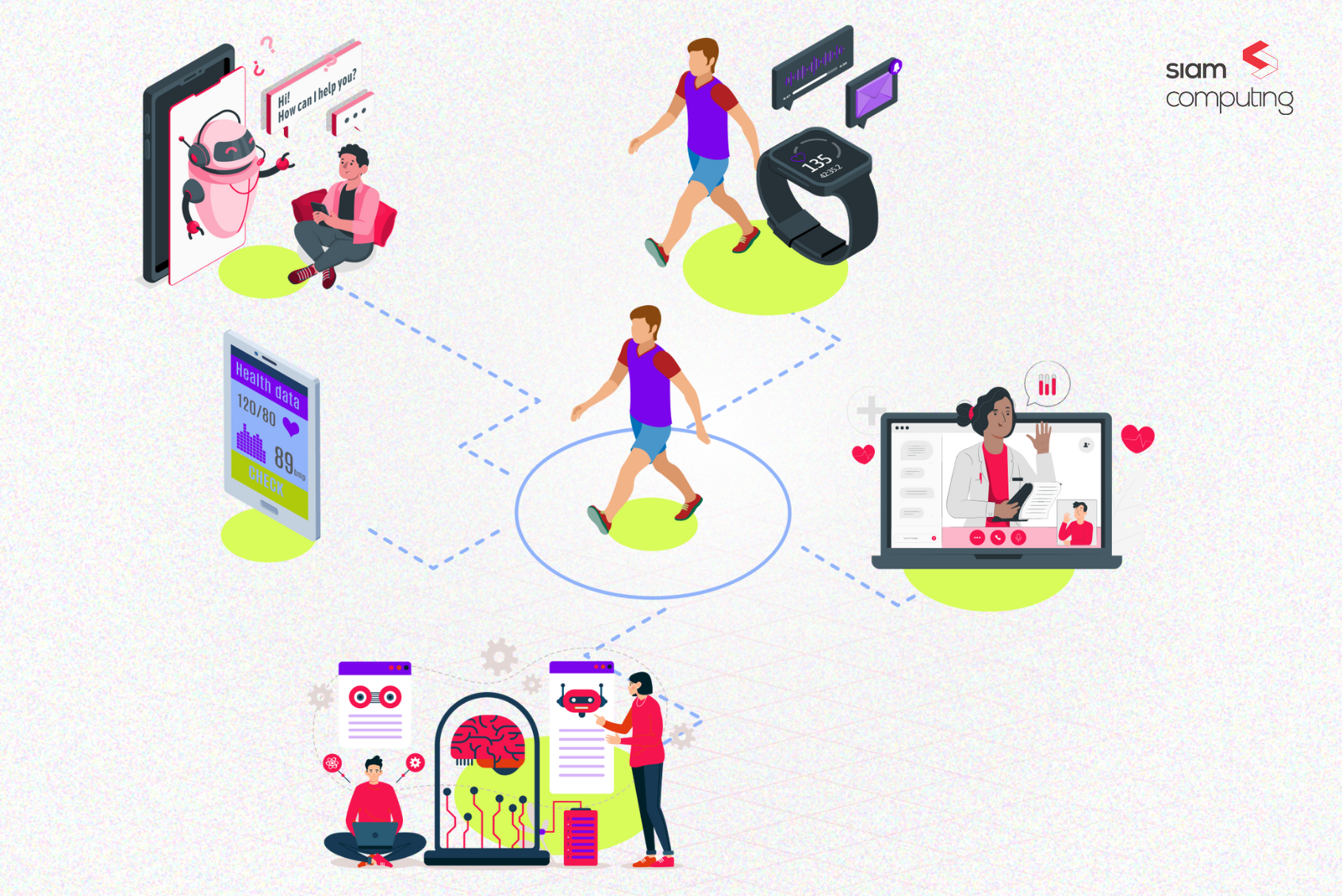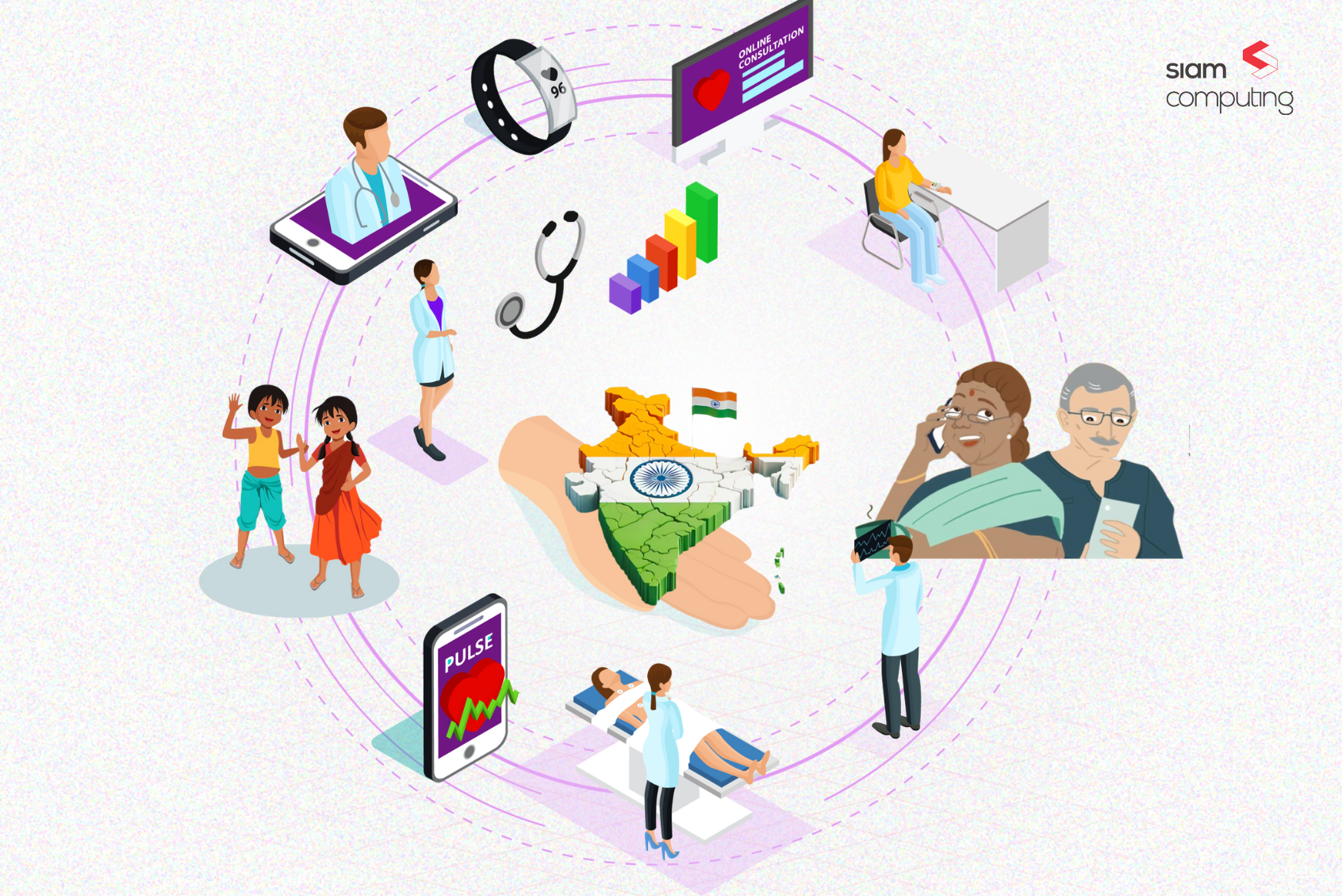Product planning and development are both an art as well as a science. It is a science because it follows clear systems, processes, tools and technologies that create a framework of how activities and processes need to be run. It is an art because of the number of ‘moving parts’ of people, processes and resources that need to come together, be inspired to work together towards commonly shared outcomes and milestones.
In our previous blogs, we traced the arc of ideating the solution, ensuring that the solution had a viable impact on the target market and then creating the right product for the right market, testing the market and the product through prototypes and various design thinking tools and finally, understanding how the technologies and skills would have to come together to achieve the entrepreneurial dream of making an impact in the lives of his customers.
These different components and modules do not exist in a vacuum. They need to be strung together in a ‘who does what by when’ system that works with sustainable and repeated success across the organisation. That’s what this blog is about.
It is about how the entrepreneur needs to bring all the different processes and people together, prioritising features, building product roadmaps and mapping how resources will be utilised while bringing the product into the world.
The blog will cover three sub topics
- Feature Prioritisation
- Building a product roadmap
- Resource Utilisation Map
Feature Prioritization
The entrepreneur and his team have made it their mission to solve a need as deeply and as comprehensively as they possibly can. By this stage of the business journey, they have discussed, hypothesised, prototyped and even hired the best talent to ensure that the product meets the expectations of the target users.
At this point in time, the team has also had adequate exposure to the product and the requirements from the product. Each of them comes to the table with a set of ideas that are backed by data and have their basis in the MVP document. Each of them would have their own approach to solving the problem most effectively and more importantly, their own priorities for what comes first and what comes later.
In a culture that values the diverse opinions of smart people, there is likely to be more than one occasion where an individual or a small group of people believe that their ideas are better than the others’. Getting all these diverse viewpoints together, listening to them and creating a ‘best fit’ version where people’s views are taken along is an important activity. There is no point in bringing together the best minds available and not taking their views into account.
What happens next is a ‘firehose’ of ideas that come thick and fast as the team comes up with ideas and priorities on what happens next. It’s a tricky situation and the entrepreneur may find himself being ‘snowed under’ by people who are often smarter and better equipped in their fields of expertise than him.
This may seem overwhelming – especially to entrepreneurs who are by nature introverted and prefer to avoid ‘ruffling feathers’.
We have one piece of advice here – conversations based on data and customer needs will help ‘center’ the discussion around the problem and solutions rather than individual ideas, opinions or ‘camps’.
Roadmap Prioritisation Factors
Customer feedback
Customer needs are the very reason why the team is meeting each other. Their wants and needs as encapsulated in the MVP need to be front and centre of any ideation process. It also needs to be a critical factor that defines ‘go/no-go’ decisions as and when the team faces such situations. Customer feedback will also help the team understand what are the real priorities that would increase product adoption.
Analytics and metrics
Analytics and metrics have a magical quality about them. They clarify situations and methods dispassionately and without the ‘personal’ angle. Show the team a chart or a series of number depicting a situation and the team will lean towards the solution rather than fall to personal attacks on how someone did not do something. Analytics and metrics are the entrepreneur’s best friends in more ways than one! We would recommend that entrepreneurs make analytics and metrics their friend.
Competition
Talking about what the competition is doing or has already done in terms of recently rolled out patches, updates and upgrades and then matching them with the analytics that talks about increases or decreases in the usage of the product is a great way of fine-tuning the discussion to focus on what the company would really like to ship with the next version of their software product. This is another great tool to centre discussions because it immediately creates a shared agenda for everyone to rally behind.
Sales and Customer Success
This is a corollary of what has been discussed in the previous points. The sales and customer facing teams provide valuable insight on what is the current state of play in the market and what are the ‘felt needs’ of the customers. Adding them into these discussions keeps everyone focused on the customer and the needs, wants and desires of the customer. This is also a great opportunity to revisit the MVP and make course corrections.
Analyst Research
Analyst research from companies such as Gartner helps the entire team gain a high level understanding of how the market and the products have been evolving. Analysts’ work products like Gartner’s Magic Quadrant present great opportunities to understand competition and the product features that are helping the competition gain an upper hand. What this does is to provide an impartial third party lens through which companies can view their ideas and ideation processes.
To summarise this section : We feel that there is a lot of value in ensuring that diverse viewpoints are considered while fine-tuning and prioritising the firehose of ideas that are being thrown up. Keep the discussion about the product and not about people. Focus on customer needs and clearly prioritise them. Keep an eye out for sector specific data that show the way the industry and sector are moving. Roadmap Prioritisation Techniques
Once the team has made a list of all the features, the next step is to identify how the features will find their place on the roadmap (and whether they will be dropped in the short, medium or even long term).
During the course of our research while writing this blog, we have discovered the following techniques that are being used. We hope they help you.
- The ‘Kano Model’ – this model plots the Customer Delight versus Product Function on a chart. . The model hinges on Basic, Performance and Excitement Features.
- Basic features are ‘must-have’ features that the product needs in order to compete even at the very basic level. These features are non-negotiable and cannot be avoided/ignored. Rolling out a product without these features could spell disaster
- Performance features – Performance features that give the company a proportionate increase in customer satisfaction as they are invested in. These features need to be prioritised carefully because they have a dollar cost attached to them and therefore, must be dealt with carefully.
- Excitement features – These are features that yield a disproportionate increase in customer delight as investments in them increase. Not having these features may not be noticed by the customers. But add them, and what ensures is dramatically improved customer delight.
- The MoSCoW Model also helps create a simple ‘starter pack’. The term comes from the MSCW : Must, Should, Could and Won’t. The MoSCow Model is similar to the Kano Model, but the difference is that the MoSCoW Model looks at 2 additional factors. Here’s an interesting video on this model : https://bit.ly/31xPDek
- Must : These are features that are a barrier to entry. Not having this product feature is unacceptable.
- Should : These features provide a sense of satisfaction in the mind of the user. These features add value as well as a sense of excitement in the minds of the customer and need to be evaluated through the lens of the Kano Model.
- Could : These features are not immediately required and could be delayed for development/release or dropped altogether.
- Won’t : These features have been permanently dropped from the feature list because they clash with either the long term goals of the product or company or are deemed to clash with the vision, mission and values of the company.
- The Value Vs Complexity Model : The value versus complexity model allows the business to evaluate opportunities based on its business value and the relative complexity to implement once the decision to ‘go ahead’ with development is finalised. It uses a simple matrix that shows the initiatives that deliver the highest value and require the least effort as low-hanging fruits for the product roadmap. The business can also identify and avoid the initiatives that offer the lowest value but require the highest effort. Initiatives that fall into the other two quadrants will need to be discussed further.
- The ‘Buy a Feature’ Model : The “buy a feature” method is an interesting system of decision making/prioritisation that can be used with stakeholders to prioritise a set of potential features. This involves the process of team members ‘putting their money where their mouth is’. In this exercise,“prices” are assigned to a list of potential features (based on the relative cost to develop them). A set amount of cash is handed out and participants are asked to “buy” the features. Some participants will place all of their money on one particular feature they’re passionate about, while others might spread their money around in smaller amounts to a larger number of features. The result of how much money is placed on each feature is the prioritised feature list.
- The ‘Opportunity Scoring’ Model : Opportunity scoring is a type of gap analysis that has its roots in outcome-driven innovation. The idea is to measure and rank features according to their importance and how satisfied customers currently are with them. The opportunities would be those features that hold high importance and receive low satisfaction scores. These are the ‘low hanging fruits’ that need to be factored-roadmap because they all provide an almost instantaneous ‘bump up’ in user experience positivity. Businesses can also use the opportunity scoring model to plot their competitors’ features and customers’ relative satisfaction with those features to help them identify areas for innovation that are meant to create a differentiating factor between themselves and the competition.
Building a Product Roadmap
In his incisive article on Medium, Jens-Fabian Goetzman; product roadmaps have long since moved away from the usual Gantt chart systems.
According to him, modern product roadmaps need to exhibit the following features:
- map out themes, not features;
- include time horizons, not dates;
- have higher granularity in the near term than further out.
Chart courtesy : https://medium.com/@jefago/how-do-you-create-a-product-roadmap-d41a42b4a543
We will cover each of these modules in a little more detail…
Vision and Strategy
The vision and strategy for the product defines the framework for the entire project. The entire product roadmap is built to ensure that the vision and strategy of the organisation is met. Therefore, it is imperative that this aspect is tackled and identified before starting the project.
By nature, strategy itself is a shifting concept and needs to be adaptable to tge changing times and technologies that are in place now and will exist in the future. However, the product strategy needs to be more specific, defining:
- How will value be delivered to our customers?
- how will this product be differentiated from the competition?
- how will the company make money from the product?
Strategic goals are by nature, more long term than short term. For instance, a goal for a company may be to increase a certain percentage of billings of one type of client from an app store billing to a credit card billing in the app itself. Another strategic goal may be to execute changes in the product to either increase the life-time value or increase referability of the app to more people over the course of a year.
Prioritize high level themes
While working on the value proposition, the goal was to be able to identify areas where the pain points of the customers can be alleviated while playing up the positive aspects of the software product. These can be clustered into themes at a high level. A simple post-it exercise will help the business understand what needs to be the overarching goals that will be pursued in the future, across the business verticals.
Once high level themes are identified and priorities are mapped them, the teams also need to be assigned with the staff necessary to see the execution through. The recommendation is for the team to have a 3 to 12 month timeline and be equipped with cross functional staff members as well as specialists who can see the task through.
Setting up scope and goals
Once the themes have been identified and teams have been assembled to meet the goals, it is important to set out and document the goals for both the teams as well as the products. That;s where the OKR (Objectives and Key Results) comes in. OKRs should be mappable to the vision of the themes and by extension, to the vision of the company. Creating good OKRs is a task in itself and needs to be deliberated very carefully. However, when done well, the time taken to craft OKRs is worth it through focused efforts and reduced costs.
Setting up OKRs well will also result in the overall effort being tied in to both the company goals as well as the product/theme goals.
Discover opportunities
Once the OKRs have been defined, the teams then need to start working on exploring the different ways by which they will be able to meet the targets and metrics that have been set out in the OKRs.
For this, we would like to re-introduce the ‘double-diamond design process’ that was shared in Blog 3 : Root Cause Analysis (insert link to Blog 3 here)
Following the double diamond design process, the first step should be to discover opportunities within the theme. This stage marks the ‘diverging’ phase where the net is ‘cast wide’ to capture ideas, thoughts and ways of working. The ‘Opportunities’ that are being discussed here could be the pain points that customers have with the existing solution, unmet customer needs, or even ways to extract additional business value from the value chain. Here, it makes sense for the teams to be given copies of the MVP that was created and then finalised so that they can understand this quickly without having to boil the ocean.
These opportunities should then be prioritized. The idea is not to start thinking about solutions just yet (though the urge to start is tempting). The best bet is to go with a rough guess-timate of the complexity of pursuing opportunities.
Develop hypotheses
Once the ideas have been developed, the next steps are to develop hypotheses that will help the product team discover multiple ideas or opportunities and then discuss the best set of workable solutions that will help address the opportunity.
It is both natural and obvious that not all hypotheses will be successfully validated. Therefore, it is important to ensure that the experiments yield a learning – even if it fails to address the opportunity. Once these hypotheses are developed, they need to be validated through customer interviews, prototypes or building features and A/B testing them to know more about whether the opportunity is being addressed.
Order the prioritised opportunities
The previous step provides a list of opportunities that have helped the teams either create concrete opportunities that can be successfully pursued as well as a set of opportunities that they know don’t work or need to be reworked at a later stage.
This step focuses on ensuring that the work items/opportunities are ordered in a systematic and consistent manner on the basis of the following 3 parameters:
- Dependencies : It makes sense for the team to start working on activities that require the cooperation of several cross functional teams earlier in the process so that the ‘grunt work’ is taken care of earlier in the process and so that teams can get smaller and less complicated as the project progresses and gains complexity.
- Delivery rhythm : In order to maintain team morale, it makes sense to mix the big ticket and small ticket items in a way that allows the team to see forward momentum through finished work products at regular intervals. This momentum and morale can then be used to fuel the next ‘sprint’ of activities towards the next goal. Though this is not often thought of as a priority-defining step, we believe this is important because not doing so would result in teams working hard and laboring over work products that never seem to see the light of day. Morale is important!
- ROI : Most prioritising exercises begin with listing out the RoI of specific functionalities and ordering them in such a way that the RoI is optimized. The catch with this methodology is that it is rarely clear what the RoI on the opportunity (or even the opportunity cost) is going to be. We therefore relegate RoI to the last in the list because of this very reason.
Execute, deliver, learn and adapt
Make no mistake – software product development is not a linear process. It involves multiple stages of planning, execution, stepping back, capturing learnings and iterating.
To summarise this section : Software product development is a complex process involving multiple moving parts, all of whom have to work in concert towards meeting the client as well as customer needs, wants and desires. A software development vendor must be able to bring to the table extensive knowledge, deep experience, a zest for collaboration and constant testing, a clear mind that stays clear for the long haul and the organisational stamina to ‘go the distance’.
Resource Management Map
Efficient utilisation of resources is what often differentiates between successful startups and those that just burn cash with very little forward movement to show for it.
A resource management methodology that is drawn up early, secured buy-in early in the system and that adapts to the changing needs of the business goes a long way in ensuring products are shipped on time and within budget.
In the previous set of sub-topics, we touched upon facets of how to prioritise features and then began to put in place a framework to start working on the priority items. We also discussed how, at this stage, the different ‘factors of production’ began to come together towards a shared goal. This is exactly the stage when a resource management system needs to be put in place.
That’s what this subtopic will cover : Resource Management
What is Resource Management?
Asana; a project management software company based in San Francisco has a detailed blog on this topic. Asana defines resource management, or resource allocation, as the process of planning and scheduling your resources and activities.
The value that resource management brings to the business
Resource management is no longer a ‘nice to have’ in today’s complex world where one team’s output needs to be seamlessly integrated into the next team’s input. It has now become not just non-negotiable, but a true competitive advantage when facing constraints around the various factors of production. Today’s customers are discerning and are wired to immediately react to positive or negative customer experiences anywhere in the process and pivot almost immediately.
Resource management also ensures that employees – one of the key factors of production in the knowledge economy are kept engaged, and are doing the right amount of work.
The top 5 advantages of resource management
- See the big picture – in detail. Allocate resources effectively enables everyone on the team get a broad view of the project in its entirety. This allows everyone to chip in and make things easier for everyone to get on the same page, collaborate and make things better.
- Distribute work appropriately. You likely know the strengths and weaknesses of each of your team members. Very often, companies realize that their employees are overworked only when top talent walks out of the front door – no thanks to burnout caused by overwork. Resource management helps companies head off such unfortunate events very early by identifying bottlenecks, unfair workloads and other constraints and then showing the management what they need to do to help alleviate the situation or even eliminate it. Resource Management helps the project team assign the right task to the right person boosting both productivity as well as morale.
- Realistic goal setting. Setting goals that make sense and play to people’s strengths is a very important aspect of project management. It’s also good for the business bottom-line. Setting goals that are rooted in data and an accurate image about the task backlogs, planned tasks and future tasks is the first step towards setting goals that people can achieve and feel happy about.
- Improve future planning. Resource Management helps teams create templates of how long tasks take to finish and who are the best people who can complete the task. This creates a set of best practices that can be seamlessly carried forward every time a new task enters the workflow. Coupled with a clear idea of current workloads, project managers can work together with team members better.
To summarise this section : Resource management goes a long way in ensuring that the right material, manpower and resources reach the right work areas. It is the glue that helps bind the project management team together and take the business forward.
Business is all about the right strategies. That’s where our product development expertise helps you. Siam Computing delivers impactful product solutions to hundreds of startups and enterprises across the globe.








